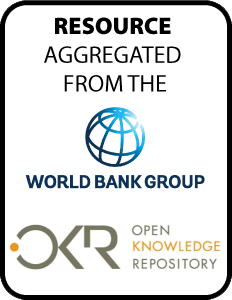Resource information
This paper provides empirical estimates
of the impacts of natural disasters on different forms of
capital (with a focus on human and intangible capital and
natural capital), and on real gross domestic product per
capita. The types of disaster considered are droughts,
earthquakes, floods, and storms and their impacts are
measured in terms of the number of people affected or people
affected per capita. The authors find statistically
significant reductions on the values of human and intangible
capital and land capital as a consequence of the disasters,
and these reductions are greater when the impacts last for
longer periods. Based on the assumption that natural
disasters indirectly affect the level of income via losses
in capital, the authors estimate a Cobb-Douglas production
function using the different forms of capital as inputs. The
losses in income are found to vary across different
countries and the type of natural disaster studied. However,
a common finding is that the losses in income depend
generally on two factors: the relative magnitude of impacts
of a natural disaster and the values of different forms of
capital. The estimates in this paper are national level
figures and cannot be useful in predicting the cost of
damages at the local level, where much larger amounts can be
experienced per capita. Nevertheless, the estimates provide
some indication of magnitudes for different disasters and
for different groups of countries. More work and more data
are needed to get a dynamic profile for the losses of
capital and income. But given the study's results, the
time profile is estimated to range typically between two and
five years.


